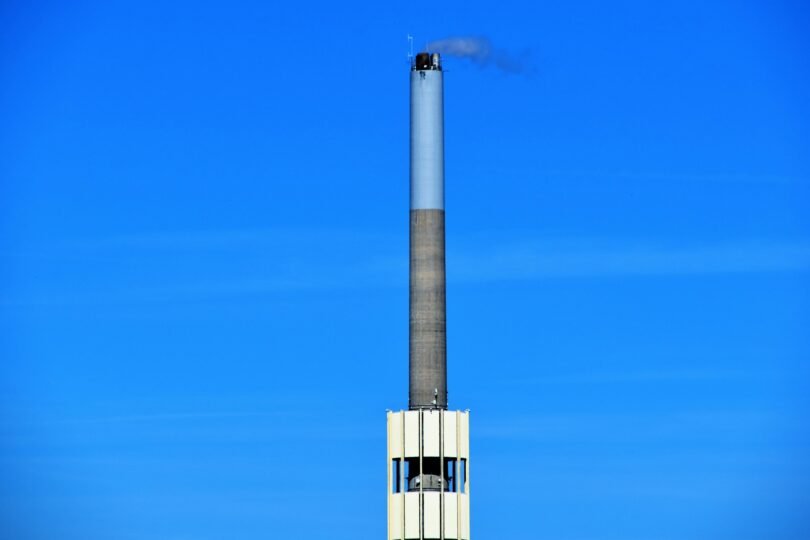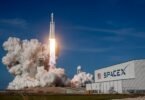The Science Behind Rocket Propulsion
Rocket propulsion is one of the most fascinating and complex achievements of modern science and engineering. From launching satellites into orbit to sending astronauts into space, rockets have become the backbone of space exploration and defense technologies. The idea of lifting enormous vehicles against the pull of gravity and propelling them into outer space has intrigued humankind for centuries. Today, rocket propulsion combines principles of physics, chemistry, and engineering to make space travel possible.
In this article, we will explore the science behind rocket propulsion, including its history, fundamental principles, types of propulsion systems, fuels, challenges, and the future of rocketry.
1. Introduction to Rocket Propulsion
Rocket propulsion is the process of generating thrust that propels a rocket forward. Unlike airplanes, rockets do not rely on the atmosphere for lift or thrust. Instead, they carry both fuel and oxidizer to create a self-contained system capable of working in the vacuum of space.
At its core, rocket propulsion relies on Newton’s Third Law of Motion: For every action, there is an equal and opposite reaction. When gases are expelled at high speed from the rocket’s engine, an opposite force pushes the rocket forward.
2. Historical Background
The concept of rockets is not entirely modern. Ancient civilizations experimented with primitive rocket-like devices.
2.1 Ancient Roots
-
Chinese Fire Arrows (9th century): The Chinese used gunpowder-filled tubes attached to arrows as weapons. These were among the earliest examples of solid-fuel rockets.
-
Indian and Middle Eastern Developments: Similar gunpowder-based rockets were developed in India and used in warfare by the Mysorean army against the British in the 18th century.
2.2 Modern Rocket Science
-
Konstantin Tsiolkovsky (1857–1935): Known as the “father of astronautics,” Tsiolkovsky formulated the rocket equation that governs rocket motion.
-
Robert H. Goddard (1882–1945): An American physicist who launched the first liquid-fueled rocket in 1926.
-
Wernher von Braun (1912–1977): Played a key role in developing the V-2 rocket during World War II and later the Saturn V rocket that took humans to the Moon.
These pioneers laid the groundwork for the rockets we use today.
3. The Physics of Rocket Propulsion
Rocket propulsion is deeply rooted in classical mechanics and thermodynamics. Let’s break down the fundamental physics behind it.
3.1 Newton’s Third Law
The principle of action and reaction explains rocket motion. When exhaust gases are expelled downward at high velocity, the rocket experiences an equal and opposite force upward, creating thrust.
3.2 The Rocket Equation
Konstantin Tsiolkovsky derived the rocket equation, which relates the change in velocity (Δv\Delta v) of a rocket to its exhaust velocity (vev_e) and the ratio of initial mass (m0m_0) to final mass (mfm_f):
Δv=ve⋅ln(m0mf)\Delta v = v_e \cdot \ln \left( \frac{m_0}{m_f} \right)
This equation demonstrates why rockets need to carry enormous amounts of fuel to achieve high velocities.
3.3 Conservation of Momentum
The thrust generated is a direct consequence of momentum conservation. The momentum carried away by the exhaust gases equals the momentum gained by the rocket.
3.4 Specific Impulse (Isp)
Specific impulse is a measure of the efficiency of a rocket engine. It is defined as the thrust produced per unit of fuel flow rate. The higher the specific impulse, the more efficient the engine.
4. Components of a Rocket Propulsion System
Rocket propulsion is not just about burning fuel; it involves a carefully engineered system of components.
4.1 Propellant
The combination of fuel and oxidizer used to generate thrust.
-
Fuel: Provides the chemical energy (e.g., hydrogen, kerosene).
-
Oxidizer: Provides oxygen for combustion (e.g., liquid oxygen).
4.2 Combustion Chamber
A chamber where fuel and oxidizer mix and burn at high pressure, producing hot gases.
4.3 Nozzle
A nozzle converts high-pressure, high-temperature gas into a high-speed jet. The most common design is the De Laval nozzle, which accelerates gases to supersonic speeds.
4.4 Ignition System
A system that initiates combustion. It may involve electrical sparks, pyrotechnic igniters, or hypergolic propellants that ignite on contact.
4.5 Cooling System
Since rocket engines operate at extreme temperatures, cooling systems like regenerative cooling are necessary. In this method, fuel is circulated around the engine walls before combustion to absorb heat.
5. Types of Rocket Propulsion
Rocket propulsion can be broadly classified into chemical and non-chemical systems.
5.1 Chemical Propulsion
Chemical propulsion uses chemical reactions to produce thrust.
5.1.1 Solid Propellant Rockets
-
Propellant is stored in solid form.
-
Simple and reliable, often used in military missiles and booster stages.
-
Once ignited, they cannot be shut off.
-
Example: Space Shuttle Solid Rocket Boosters.
5.1.2 Liquid Propellant Rockets
-
Propellant stored in liquid form (fuel and oxidizer in separate tanks).
-
Can be controlled, throttled, and restarted.
-
More complex than solid rockets.
-
Example: Saturn V, Falcon 9.
5.1.3 Hybrid Rockets
-
Use solid fuel and liquid oxidizer.
-
Offer safety of solids and controllability of liquids.
-
Still under development compared to other types.
5.2 Non-Chemical Propulsion
Non-chemical systems rely on physics other than chemical combustion.
5.2.1 Electric Propulsion
-
Uses electric fields to accelerate ions.
-
Very high efficiency but low thrust.
-
Suitable for deep-space missions.
-
Example: Ion thrusters on NASA’s Dawn spacecraft.
5.2.2 Nuclear Propulsion
-
Uses nuclear reactions to heat propellants.
-
Potential for high efficiency and interplanetary travel.
-
Still in experimental stages due to safety concerns.
6. Rocket Fuels and Oxidizers
The choice of fuel and oxidizer has a huge impact on rocket performance.
6.1 Solid Fuels
-
Mixtures of fuel (aluminum powder) and oxidizer (ammonium perchlorate).
-
Advantages: simplicity, storability.
-
Disadvantages: lack of control.
6.2 Liquid Fuels
-
Kerosene (RP-1): Used in SpaceX’s Falcon 9.
-
Liquid Hydrogen (LH2): High efficiency but difficult to store.
-
Hypergolic Propellants: Ignite on contact (e.g., hydrazine).
6.3 Oxidizers
-
Liquid Oxygen (LOX): Most common.
-
Nitrogen Tetroxide (N2O4): Used with hypergolic fuels.
Read More: The Next Giant Leap: Rockets of 2025 and Beyond
7. Challenges in Rocket Propulsion
Rocket propulsion faces several challenges:
7.1 Overcoming Earth’s Gravity
Reaching orbit requires speeds of about 28,000 km/h (17,500 mph). This demands enormous amounts of energy.
7.2 Efficiency and Weight
Carrying fuel adds mass, and the rocket equation shows diminishing returns. Engineers must carefully balance weight and efficiency.
7.3 Heat and Pressure
Engines must withstand extreme conditions—temperatures exceeding 3,000°C and enormous pressures.
7.4 Environmental Concerns
Rocket launches release greenhouse gases and potentially harmful chemicals into the atmosphere. Sustainable fuels are being researched.
8. Applications of Rocket Propulsion
Rocket propulsion has diverse applications:
-
Space Exploration: Satellites, interplanetary probes, and crewed missions.
-
Defense: Ballistic missiles and military applications.
-
Commercial Use: Satellite launches, space tourism, and cargo transport.
-
Scientific Research: Space telescopes, planetary rovers, and experimental spacecraft.
9. Future of Rocket Propulsion
The future of rocket propulsion is promising, with innovations aiming for higher efficiency, reusability, and sustainability.
9.1 Reusable Rockets
Companies like SpaceX and Blue Origin are pioneering reusable rockets, dramatically reducing launch costs.
9.2 Green Propellants
Research is ongoing into environmentally friendly fuels like hydrogen peroxide and biofuels.
9.3 Advanced Propulsion Concepts
-
Fusion Propulsion: Harnessing nuclear fusion for deep-space travel.
-
Antimatter Propulsion: A futuristic idea with incredible potential energy release.
-
Solar Sails: Using radiation pressure from the Sun to propel spacecraft.
9.4 Human Exploration of Mars
NASA’s Artemis program and SpaceX’s Starship aim to use advanced propulsion to enable crewed missions to Mars in the coming decades.
10. Conclusion
Rocket propulsion is a remarkable blend of science and engineering. From the early fire arrows of ancient China to the powerful reusable rockets of today, humanity’s journey into space has been made possible by mastering the principles of thrust, momentum, and fuel efficiency.
While challenges remain—such as overcoming the limits of efficiency, reducing environmental impact, and developing sustainable propulsion methods—the future is bright. With ongoing research in nuclear, electric, and even fusion propulsion, rockets may one day take us far beyond the Moon and Mars, opening up the cosmos for exploration.
Rocket propulsion is not just about machines—it is about human curiosity, ambition, and the drive to reach beyond our world.







